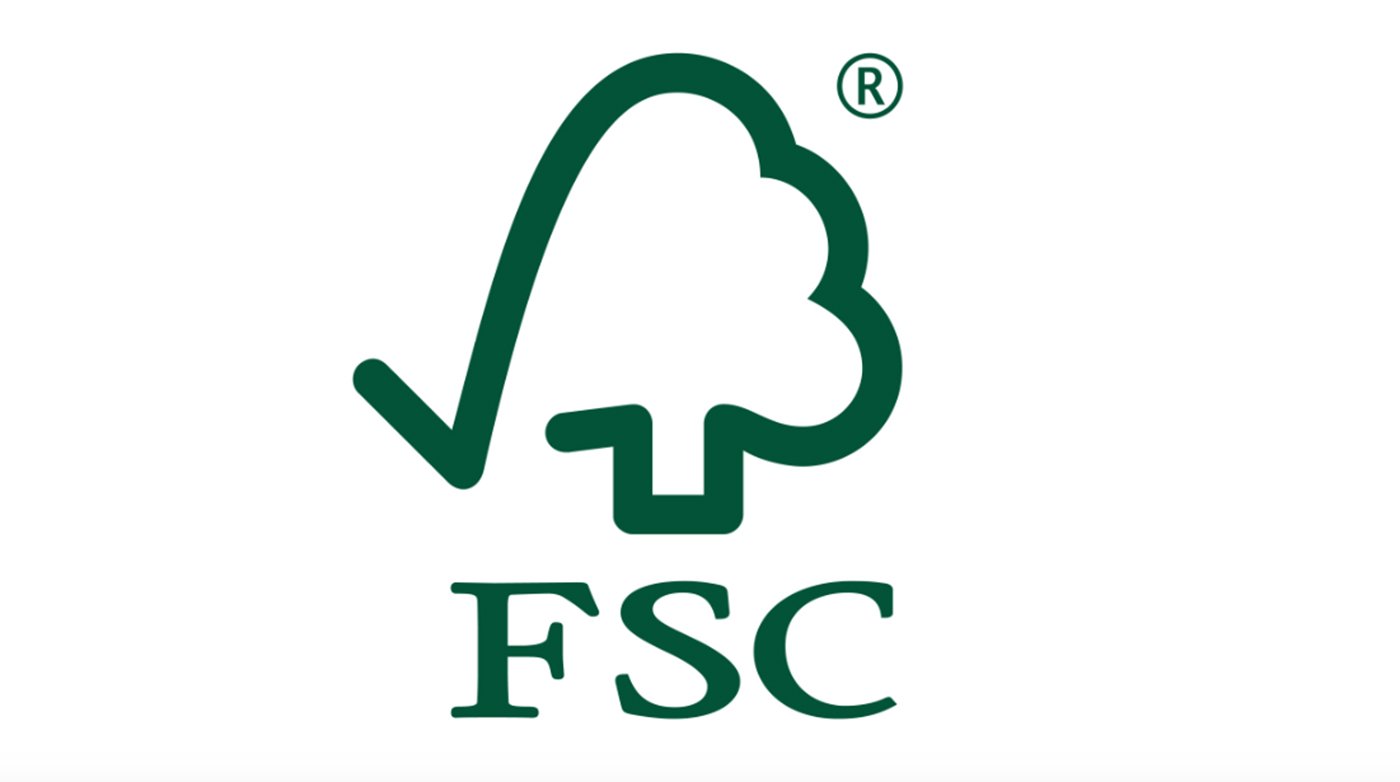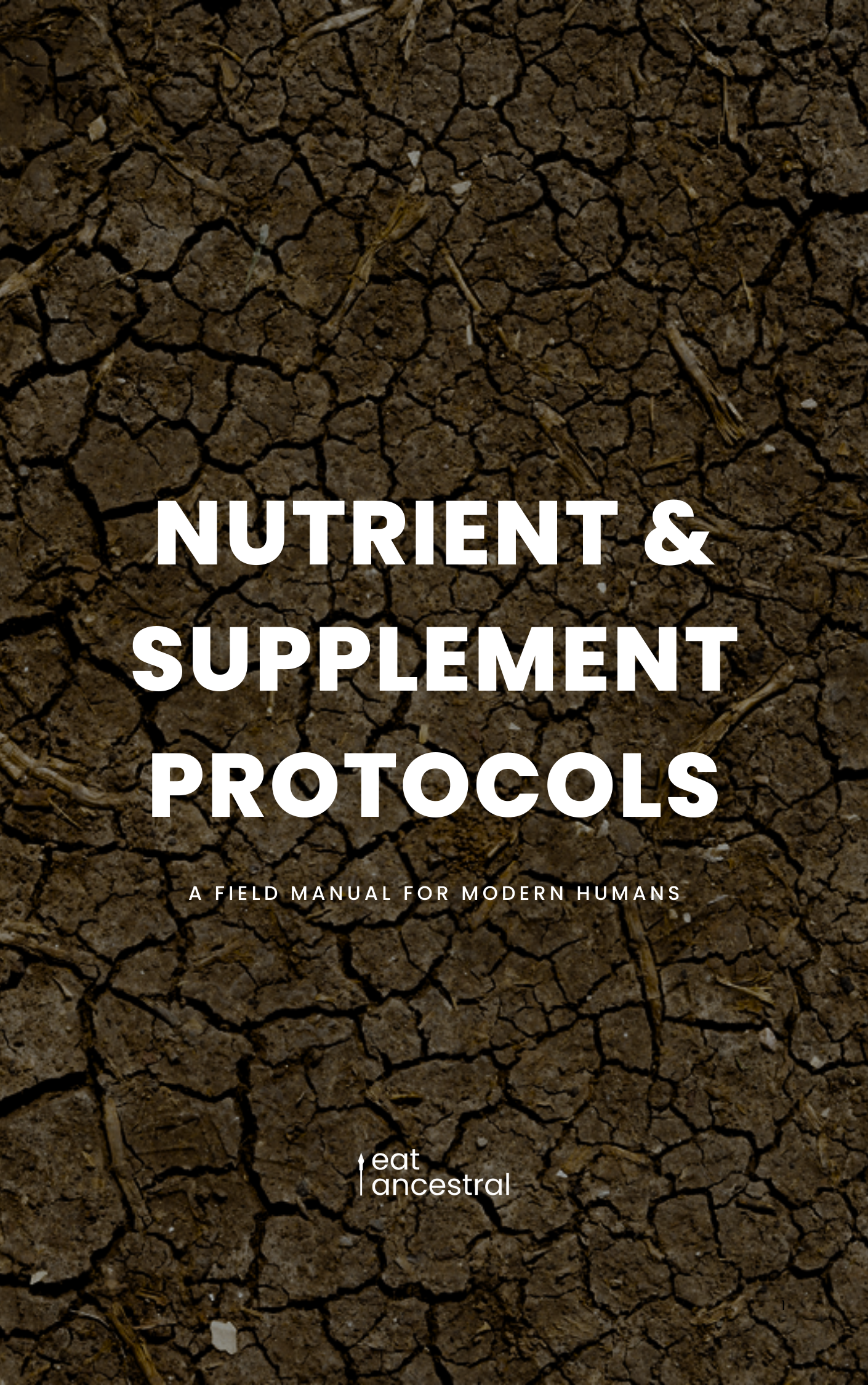-
Does it smell like beef?
Nope. The way we purify the fat (using spring water and sea salt) removes those compounds, and leaves behind a clean, neutral, very socially-acceptable fat.
My tallow is really hard. How can I soften it?
During colder months, keep your tallow balm in a warm spot.
What can I do with the jar?
This is not just any old jar. These jars are extremely useful. I suggest that you use your new Le Parfait jar to learn about fermentation. Make some wild-fermented kimchi, kraut, or pickles.
Will this help my skin issues; eczema, psoriasis, acne etc.?
It’s not a bad idea; it may offer a soothing effect, but it is not a long-term solution for these chronic issues. Contact us if you need support with these issues.
The original skincare routine 🧴
For many centuries, animal fat was a key ingredient in traditional soaps and skincare products. Whether eaten or rubbed onto the body, animal fat was considered nourishing, healing and essential for wellbeing in many hunter-gatherer societies. In these cultures, animal fat was used to dress cuts or wounds, and during sacred rituals and ceremonies. It was also strongly-associated with fertility and reproductive health. In Aboriginal culture, fat was believed to encourage and protect the fertility process; “In the Unmatjera tribe ...when it is evident that the woman is pregnant, the husband rubs grease over the sides of the woman”. Half a world away in East Africa, the Samburu tribe held a similar belief… “If a woman has difficulty in having children, a little fat is spread over the woman's belly”.
Our ancestors were on to something.
A brief glance at the nutritional profile of tallow can explain some of these cultural practices…
Deep nourishment for all skin types ✋🏾✋🏽✋🏼
Tallow is a rich source of essential nutrients—many of which are common deficiencies.
✅ Fat-soluble vitamins—bioavailable vitamin A (retinol), D (D3), E (α-tocopherol) & K (K2), are critical to every system in the body.
✅ Omega-3 fats, such as EPA and DHA, are critical for the nervous system, energy metabolism, and regulating the inflammatory response.
✅ Choline is necessary for neurotransmitter synthesis, cell membrane integrity, and detoxification.
✅ Conjugated linoleic acid (CLA) has been shown to exhibit anti-cancer effects.
✅ Stearic acid (C:18) is associated with beneficial effects on metabolic health, such as improved mitochondrial health, decreased cancer risk, and improved cardiovascular function.
✅ Cholesterol is essential for Vitamin D synthesis, and for making our steroid / sex hormones (testosterone, estrogen, progesterone).
These nutrients can be utilised locally (by the tissues where it is applied), and/or are absorbed into systemic circulation, to be used elsewhere in the body. Tallow (especially tallow derived from suet, see further below) is a highly-saturated fat. Contrary to modern nutrition propaganda, saturated fats (SFAs) are extremely beneficial for humans, not just for the micronutrients they contain. Highly-saturated fats (like tallow and coconut oil) are ideal for use in skincare products, because they are chemically-stable, meaning that they do not easily oxidise / go rancid. Most cosmetics / skincare products utilise plant seed oils, which instead contain high levels of polyunsaturated fats (PUFAs). These PUFAs are poor sources of nutrients, and are prone to damage from exposure to oxygen and heat (virtually guaranteed during the production and refining process). Thus, many common skincare products that contain PUFA-rich plant oils are pro-inflammatory—definitely not something you want to be putting on your skin!
Olive oil comes in many forms. We use an organic Greek extra virgin olive oil made from Koroneiki olives. Koroneiki olives are very low in omega-6 PUFA. Oleic acid (monounsaturated fatty acid (MUFA), the main constituent of olive oil) helps the moisturiser to penetrate deeper into the skin. Olive oil has also been shown to exert anti-inflammatory and wound-repairing properties, likely due to it’s high antioxidant content.
Restorative and soothing for various conditions 😇
Our tallow balm supports skin health in many ways.
✅ Dry skin
✅ Sunburn
✅ Insect stings and bites
✅ Cuts and scrapes
✅ Rashes and itchy skin conditions
Manufacturers of skincare products often claim that their formula can help with chronic skin conditions, such as eczema, psoriasis, rosacea etc. While some products (especially ones like ours, that contain bioavailable nutrients) can nourish the body, soothe inflamed areas, and temporarily alleviate symptoms, this is not a long-term solution. To find the root cause of your eczema / psoriasis etc. (which are autoimmune conditions), you must assess your entire lifestyle—nutrition, gut health, exercise, sleep, stress etc. We can help with this—get in touch via our contact form if you need support.
Nourishes and protects the body 🛡 🧬
Tallow provides key nutrients to the body, which are absorbed through the skin.
✅ Support the immune system
✅ Guard against skin infections
✅ Protect the balance of the native skin flora / microbiome
The skin is a highly-intelligent organ, a physical barrier between us and the outside world. It absorbs nutrients, turns sunlight into Vitamin D, provides a route for detoxification (for example, sweating out heavy metals), and helps us regulate our core body temperature. Where our immune systems are concerned, the skin is our first line of defence. Our skin barrier integrity and function is of paramount importance. The skin needs to remain hydrated and oiled (the skin makes it’s own moisturiser, called sebum), and the native skin flora (microbiome) must remain in a healthy balance (homeostasis). Many popular cosmetics contain chemicals that are known to damage the skin barrier, and disrupt the skin microbiome.
Carefully chosen ingredients and methods 🔍 👀
Our tallow is artisan-prepared, and exclusively made from suet.
✅ Tallow exclusively made from suet (highly-prized perinephric fat)
✅ Low-temperature rendered
✅ Naturally purified with water and sea salt
Suet is the most nutritious, highly-prized fat that envelops an animal’s kidneys (perinephric fat). Throughout human history, this fat has always been more sought-after because it is richer in nutrients! We follow a traditional method to render our suet into tallow. It is a low-temperature process that utilises water and sea salt to help extract odours and impurities, whilst not compromising the nutritional profile. This leaves no beef-y odours, just pure, clean, nutritious tallow.
Free from harsh chemicals 🧪🚫
Our tallow balm is made with three organic ingredients—tallow, olive oil, and essential oil. It is free from:
❌ Bisphenols (BPA is just one of many)
❌ Pthalates
❌ Parabens
❌ Parfums
❌ Preservatives
And we only use stainless steel and glass during production.
❌ Plastic utensils
❌ Non-stick pans
Most cosmetics and skincare products are made from cheap industrial ingredients, and contain dozens of harmful chemicals. Many are known endocrine-disruptors / xeno-estrogens (which affect hormone balance), contribute to chronic liver and kidney disease, are toxic to the microbiome, and are also linked to allergies and respiratory diseases. They also contaminate the global ecosystem via the waterways. A good rule of thumb when choosing cosmetics—if something contains dozens of ingredients, many of which you would never find in a kitchen, and most of which you cannot pronounce… don’t put it on your body!
Quality ingredients from reputable suppliers 🌿 🐄
Our tallow balm is made from the highest-quality ingredients available. Our ingredients are sourced from farmers and growers who care about animal welfare, soil health, and the environment at large.
Eco-friendly materials 🌏 ♻️
✅ Premium glass jars from Le Parfait.
✅ Our packaging materials (box, tape, paper) are made from recycled materials, and are 100% recyclable.
✅ Labels are made from FSC-certified paper and are easily removed after use.
Many cosmetics come packaged in plastic containers (or metal containers that are lined with plastic). Even products that are packaged in glass still use plastic-lined lids! We wanted to minimise the exposure of our Organic Tallow Balm to plastic as much as possible, which is how we ended up selecting reusable glass jars from Le Parfait.
-
Akdis, C. A. (2021). Does the epithelial barrier hypothesis explain the increase in allergy, autoimmunity and other chronic conditions? Nature Reviews Immunology, 21(11), 739–751. https://doi.org/10.1038/s41577-021-00538-7
Astrup, A., Magkos, F., Bier, D. M., Brenna, J. T., de Oliveira Otto, M. C., Hill, J. O., King, J. C., Mente, A., Ordovas, J. M., Volek, J. S., Yusuf, S., & Krauss, R. M. (2020). Saturated Fats and Health: A Reassessment and Proposal for Food-based Recommendations: JACC State-of -the-Art Review. Journal of the American College of Cardiology, S0735109720356874. https://doi.org/10.1016/j.jacc.2020.05.077
Baggerly, C. A., Cuomo, R. E., French, C. B., Garland, C. F., Gorham, E. D., Grant, W. B., Heaney, R. P., Holick, M. F., Hollis, B. W., McDonnell, S. L., Pittaway, M., Seaton, P., Wagner, C. L., & Wunsch, A. (2015). Sunlight and Vitamin D: Necessary for Public Health. Journal of the American College of Nutrition, 34(4), 359–365. https://doi.org/10.1080/07315724.2015.1039866
Bailey, R. L., West Jr., K. P., & Black, R. E. (2015). The Epidemiology of Global Micronutrient Deficiencies. Annals of Nutrition and Metabolism, 66(Suppl. 2), 22–33. https://doi.org/10.1159/000371618
Ben-Dor, M. (2013). Use of Animal Fat as a Symbol of Health in Traditional societies Suggests Humans may be Well Adapted to its Consumption. Journal of Evolution and Health. https://doi.org/10.15310/2334-3591.1022
Descalzo, A. M., Rossetti, L., Grigioni, G., Irurueta, M., Sancho, A. M., Carrete, J., & Pensel, N. A. (2007). Antioxidant status and odour profile in fresh beef from pasture or grain-fed cattle. Meat Science, 75(2), 299–307. https://doi.org/10.1016/j.meatsci.2006.07.015
Diotel, N., Charlier, T. D., Lefebvre d’Hellencourt, C., Couret, D., Trudeau, V. L., Nicolau, J. C., Meilhac, O., Kah, O., & Pellegrini, E. (2018). Steroid Transport, Local Synthesis, and Signaling within the Brain: Roles in Neurogenesis, Neuroprotection, and Sexual Behaviors. Frontiers in Neuroscience, 12, 84. https://doi.org/10.3389/fnins.2018.00084
Draelos, Z. D. (2000). Cosmetics and skin care products: A historical perspective. Dermatologic Clinics, 18(4), 557–559. https://doi.org/10.1016/s0733-8635(05)70206-0
Environmental Working Group. (2023). EWG’s SkinDeep. https://www.ewg.org/skindeep/
Halder, M., Petsophonsakul, P., Akbulut, A., Pavlic, A., Bohan, F., Anderson, E., Maresz, K., Kramann, R., & Schurgers, L. (2019). Vitamin K: Double Bonds beyond Coagulation Insights into Differences between Vitamin K1 and K2 in Health and Disease. International Journal of Molecular Sciences, 20(4), 896. https://doi.org/10.3390/ijms20040896
Huang, Z., Liu, Y., Qi, G., Brand, D., & Zheng, S. (2018). Role of Vitamin A in the Immune System. Journal of Clinical Medicine, 7(9), 258. https://doi.org/10.3390/jcm7090258
Hubbard, N. E., Lim, D., & Erickson, K. L. (2006). Beef Tallow Increases the Potency of Conjugated Linoleic Acid in the Reduction of Mouse Mammary Tumor Metastasis ,. The Journal of Nutrition, 136(1), 88–93. https://doi.org/10.1093/jn/136.1.88
Innis, S. M., Novak, E. M., & Keller, B. O. (2013). Long chain omega-3 fatty acids: Micronutrients in disguise. Prostaglandins, Leukotrienes and Essential Fatty Acids, 88(1), 91–95. https://doi.org/10.1016/j.plefa.2012.05.007
Kataria, A., Trasande, L., & Trachtman, H. (2015). The effects of environmental chemicals on renal function. Nature Reviews Nephrology, 11(10), 610–625. https://doi.org/10.1038/nrneph.2015.94
Lin, T.-K., Zhong, L., & Santiago, J. (2017). Anti-Inflammatory and Skin Barrier Repair Effects of Topical Application of Some Plant Oils. International Journal of Molecular Sciences, 19(1), 70. https://doi.org/10.3390/ijms19010070
Revelou, P.-K., Xagoraris, M., Alexandropoulou, A., Kanakis, C. D., Papadopoulos, G. K., Pappas, C. S., & Tarantilis, P. A. (2021). Chemometric Study of Fatty Acid Composition of Virgin Olive Oil from Four Widespread Greek Cultivars. Molecules, 26(14), 4151. https://doi.org/10.3390/molecules26144151
Roels, O. A. (1970). Vitamin A physiology. JAMA, 214(6), 1097–1102.
Senyilmaz-Tiebe, D., Pfaff, D. H., Virtue, S., Schwarz, K. V., Fleming, T., Altamura, S., Muckenthaler, M. U., Okun, J. G., Vidal-Puig, A., Nawroth, P., & Teleman, A. A. (2018). Dietary stearic acid regulates mitochondria in vivo in humans. Nature Communications, 9(1), 3129. https://doi.org/10.1038/s41467-018-05614-6
Spiteller, D., & Spiteller, G. (2000). Oxidation of Linoleic Acid in Low‐Density Lipoprotein: An Important Event in Atherogenesis. Angewandte Chemie, 39(3), 5. https://doi.org/10.1002/(sici)1521-3773(20000204)39:3<585::aid-anie585>3.0.co;2-g
Tarapore, P., & Ouyang, B. (2021). Perfluoroalkyl Chemicals and Male Reproductive Health: Do PFOA and PFOS Increase Risk for Male Infertility? International Journal of Environmental Research and Public Health, 18(7), 3794. https://doi.org/10.3390/ijerph18073794
Tisserand, R. & Young, R. (2014). Essential Oil Safety: A Guide for Health Care Professionals. https://www.sciencedirect.com/book/9780443062414/essential-oil-safety
Van Smeden, J., & Bouwstra, J. A. (2016). Stratum Corneum Lipids: Their Role for the Skin Barrier Function in Healthy Subjects and Atopic Dermatitis Patients. In T. Agner (Ed.), Current Problems in Dermatology (Vol. 49, pp. 8–26). S. Karger AG. https://doi.org/10.1159/000441540
Venn-Watson, S. (2020). Efficacy of dietary odd-chain saturated fatty acid pentadecanoic acid parallels broad associated health benefits in humans: Could it be essential? Scientific Reports. https://doi.org/10.1038/s41598-020-64960-y
Wang, L., Asimakopoulos, A. G., & Kannan, K. (2015). Accumulation of 19 environmental phenolic and xenobiotic heterocyclic aromatic compounds in human adipose tissue. Environment International, 78, 45–50. https://doi.org/10.1016/j.envint.2015.02.015
Winkler, J., Liu, P., Phong, K., Hinrichs, J. H., Ataii, N., Williams, K., Hadler-Olsen, E., Samson, S., Gartner, Z. J., Fisher, S., & Werb, Z. (2022). Bisphenol A replacement chemicals, BPF and BPS, induce protumorigenic changes in human mammary gland organoid morphology and proteome. Proceedings of the National Academy of Sciences, 119(11), e2115308119. https://doi.org/10.1073/pnas.2115308119
Yang, C. Z., Yaniger, S. I., Jordan, V. C., Klein, D. J., & Bittner, G. D. (2011). Most Plastic Products Release Estrogenic Chemicals: A Potential Health Problem That Can Be Solved. Environmental Health Perspectives, 119(7), 989–996. https://doi.org/10.1289/ehp.1003220
Zeisel, S. H., & da Costa, K.-A. (2009). Choline: An essential nutrient for public health. Nutrition Reviews, 67(11), 615–623. https://doi.org/10.1111/j.1753-4887.2009.00246.x













